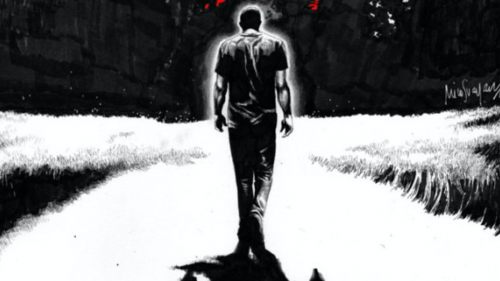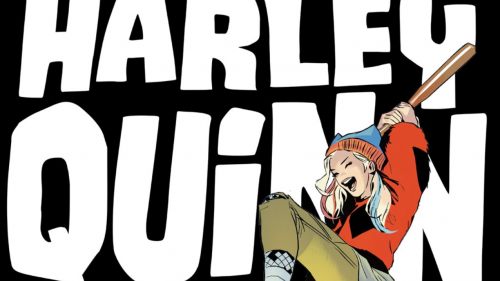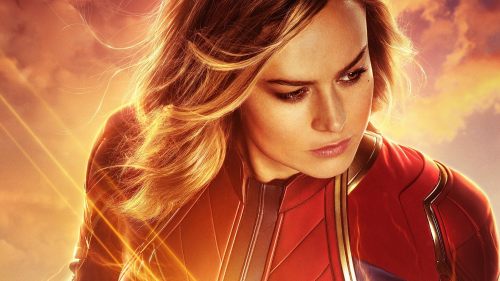CAPTAIN MARVEL: IN PURSUIT OF FLIGHT – To Push Further, To Fly Higher Is To Know Yourself
Fair Warning: This article will contain some spoilers for the first collection of Captain Marvel volume 7.
I love comics. I love the ways they contract and expand time. I love the ways they present space and movement. I love the sheer range of stories that the medium can tell. It’s a form with room for everything from grand, cosmic super-antiheroism to long-form coming-of-age stories to Archie fighting a genuine no-nonsense real deal Predator. Whenever there’s an opportunity to write about the medium, I leap for it. And with the massive presence of superhero movies, particularly those that comprise the Marvel Cinematic Universe, I’m lucky enough to have a lot of opportunities.
With the arrival of Captain Marvel, I decided to revisit In Pursuit of Flight. It’s the first volume of the run where longtime hero Carol Danvers adopted the name her late friend Mar-Vell used during his days as a superhero and donned the now-iconic blue, red and gold costume designed by Jamie McKelvie. And it’s a damn good comic.
Drawn by Dexter Soy and Emma Rios, colored by Soy and Jordie Bellaire, lettered by Joe Caramagna and written by Kelly Sue DeConnick, In Pursuit of Flight is a character study of Carol Danvers. To execute this study, the creative team deploys a variety of storytelling tools. The backbone of the text is formed by Danvers’ introspections and reflections. From there, it is complicated and developed through her past and present relationships with two late friends and mentors, and through the far-reaching impact of systemic sexism. And it is completed by those things that make a superhero comic a SUPERHERO COMIC. In Pursuit of Flight tells a story about regret, self-determination, self-perception and the ways in which others perceive us by way of a time traveling-plane, WWII-era Japanese UFOs that can combine into a giant laser cannon, the vast difference between the cadences of dialogue in comics from the 1970s and comics from the 2010s and a climax that is built on a one-on-one battle/race between Captain Marvel and her mentor/friend/rival Helen Cobb to the earlier-mentioned airplane time machine. The use of the fantastic to highlight the human, in both illustration and text, is one of my favorite things about superhero comics.
Part of the fun of reading In Pursuit of Flight lies in the contrasting approaches its illustrators take to that highlighting. Captain Marvel is immensely powerful (she can absorb and manipulate a wide spectrum of energies), and barring Helen Cobb’s briefly acquiring those powers for herself, no one in the story is a match for her in terms of sheer power. When she goes into action, the characters and their readers know she has gone into action. Soy and Rios contrast Captain Marvel’s immense power with the world around her but render that power in different ways. Consider the following two pages:

Soy colors Captain Marvel’s costume more vibrantly than the Prowler UFOs and the island they’re fighting above – so she already stands out on the page. Physically, he renders her energy projection abilities as so vast in might that they actually distort the light around her as she uses them, pure force charged to the red line and then unleashed. Soy’s Captain Marvel is power incarnate.

Rios and colorist Bellaire emphasize motion above all else in their rendering of Captain Marvel. The fight between Carol Danvers and Helen Cobb is a race as much as it is a duel. As they trade blows and look for the split-second openings that could win them the day, they never, never stop moving upwards, moving with speed and grace beyond baseline humanity. People are not meant to move at supersonic speeds at all, let alone at the angles Danvers and Cobb’s battle involves. But they do, and even in an extraordinary situation, Rios deliberately makes space to focus on emotion and expression. Her Captain Marvel is the trail of energy left by someone flying too fast for the eye (but not the panel) to see, her power rendered as speed taking human form. (Quick sidebar, Rios is one of the best artists working in Western comics today, and her surreal fable western/war comic Pretty Deadly – also written by Kelly Sue DeConnick, gets my highest recommendation.)
Narratively, writer Kelly Sue DeConnick structures In Pursuit of Flight as a personal quest for Carol Danvers, one that leads her to reaffirm herself during a period of intense personal change. On her journey through time she meets women who did not have the opportunities she had in life due to patriarchy and sexism having greater power in WWII and the late 1950s than in her own time. She comes face to face with her piloting mentor Helen Cobb’s younger self – a brave, daring woman who is also willing to shred Danvers’ timeline to claim the powers of Captain Marvel for herself, and who wonders if perhaps the older Cobb wanted to gift Danvers an ordinary life. It’s a massive misread of her future friend. While there are things that frustrate Danvers about life as Captain Marvel – the big one being that she’s automatically disqualified from claiming any aviation records of her own due to her abilities, doing good and pushing herself further past the horizon are not only a duty, but a calling – a core part of her being. To quote the older Cobb, DeConnick’s Captain Marvel is someone who will never stop pushing forward, someone who dreams of and seeks “higher, further, faster …more. Always more.” Danvers’ journey through time confirms for her that she is exactly who and where she needs to be. And thus, In Pursuit of Flight closes out Carol Danvers’ first Captain Marvel story in triumph.



